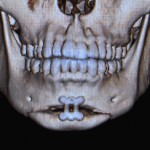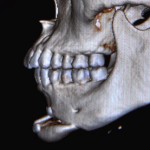The sliding genioplasty is a well known chin reshaping procedure. Unlike its cousin, the chin implant, it has a much greater versatility than simply increasing horizontal projection alone. It can be done to create a multidimensional effect from increasing or shortening vertical height, increasing or dereasing chin width and in some cases even moving the chin backwards for horizontal shortening.
The sliding genioplasty is a pedicled bone flap that maintains muscular attachments from the tongue and neck muscles which keeps the bone alive. While some perceive that it is a free bone graft,. it is not nor would it work if it was. Any bone gap created by the cut bone movement heals because the bone is alive and can make new bone to heal the gap without the need for bone grafting.


While step-offs in sliding genioplasties are common, the question is whether they should be managed at the time of the initial surgery. In most cases it is not necessary as the bone remodels over time and their prominence will become less or even completely become non-existent with enough healing time. There is also the issue that their management may potentially cause as many problems as it is intended to solve. Trying to fill the defect at the time of the initial genioplasty with some type of filler (e.g., hydroxyapatite granules) could result in a lump or clump of material that would be just as bothersome as a bone indent may be.
Dr. Barry Eppley
Indianapolis, Indiana


